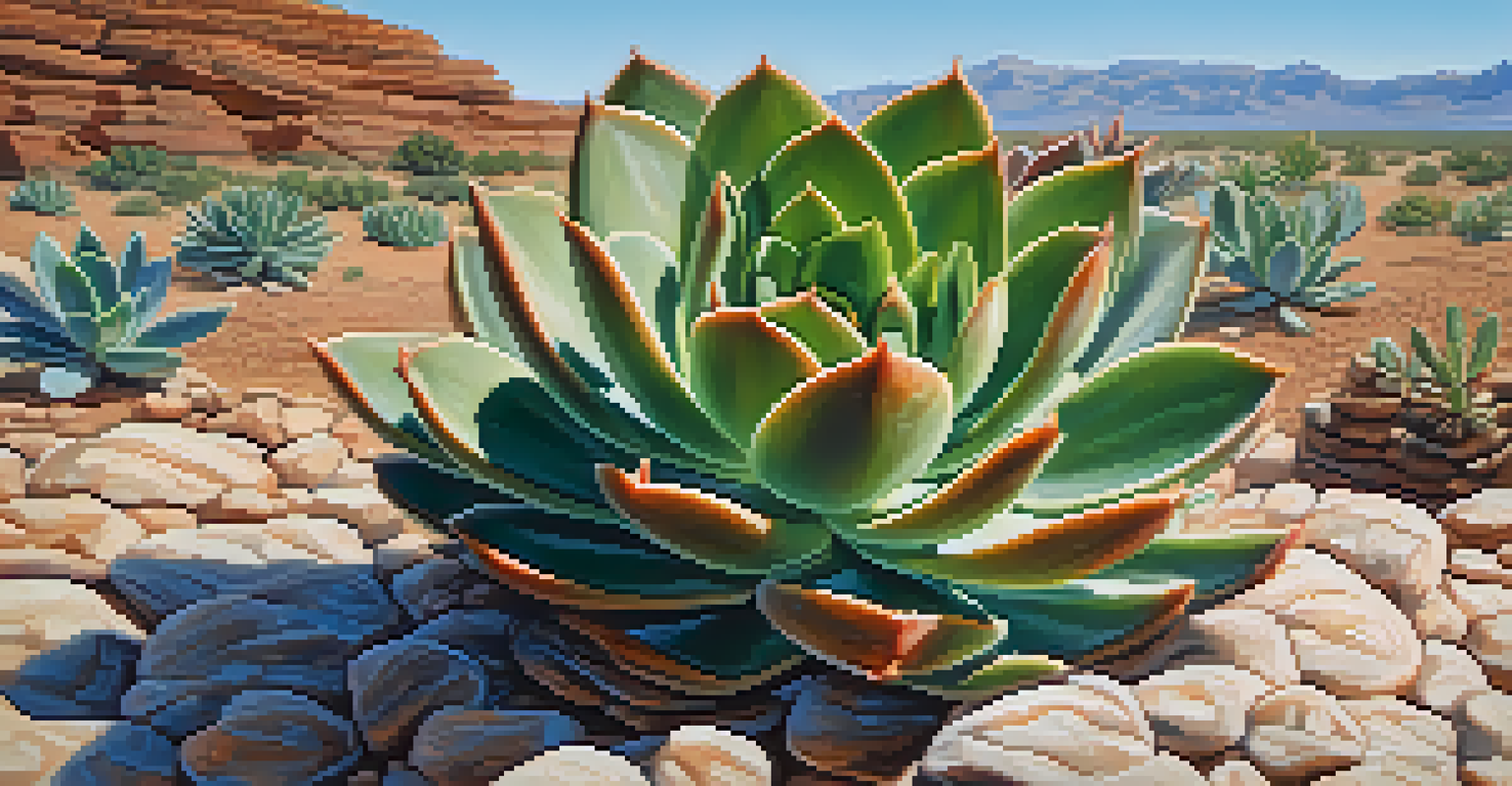Leaves: Morphological Diversity and Adaptations in Plants

Understanding Leaf Morphology and Its Importance
Leaves are vital organs of plants, primarily responsible for photosynthesis, which is how they convert sunlight into energy. Their morphology, or structure, can vary widely across species, reflecting adaptations to different environments. This diversity in leaf shape, size, and arrangement allows plants to optimize light capture, water use, and gas exchange, ensuring survival in their respective habitats.
The leaves of the plant are the lungs of the earth.
For example, broad leaves tend to be found in tropical rainforests, where sunlight is abundant, while needle-like leaves are common in coniferous trees, which thrive in colder, harsher climates. This morphological variation is not just for aesthetics; it plays a crucial role in how plants interact with their surroundings. Understanding these forms helps scientists and gardeners alike appreciate the intricate balance of ecosystems.
Moreover, studying leaf morphology can provide insights into plant evolution and adaptation strategies. By observing the differences and similarities in leaf structures, researchers can track how species have adapted over time to changing environments, giving us a clearer picture of plant resilience in the face of climate change.
The Role of Leaf Shape in Adaptation
Leaf shape is one of the most noticeable features that can indicate how a plant has adapted to its environment. For instance, the lobed leaves of oak trees can capture more sunlight while also allowing for greater airflow, reducing the risk of fungal diseases in humid conditions. In contrast, succulent plants like aloe vera often have thick, fleshy leaves that store water, a critical adaptation for survival in arid environments.

Another example can be found in the broad, flat leaves of water lilies, which float on the surface of ponds. These leaves not only provide shade for the water below but also ensure that the plant stays buoyant and receives ample sunlight. By examining these diverse leaf shapes, we can better understand the specific needs and strategies of different plant species.
Leaf Morphology Affects Survival
The diverse shapes, sizes, and arrangements of leaves enable plants to optimize light capture, water use, and gas exchange for survival in different environments.
Ultimately, leaf shape is one of nature's clever solutions to the challenges of survival. Whether it's maximizing sunlight exposure or minimizing water loss, each leaf is a testament to the evolutionary journey of its plant, showcasing the intricate relationship between form and function.
The Impact of Leaf Size on Plant Survival
Leaf size can significantly influence a plant's ability to thrive in its environment. Larger leaves tend to capture more sunlight, making them particularly advantageous in shaded areas like dense forests. On the flip side, smaller leaves can reduce water loss, which is essential for plants in arid regions where every drop counts.
Plants are the earth's endless effort to speak to the listening heaven.
Take, for instance, the large leaves of tropical plants that rise above the forest canopy. These leaves harness maximum sunlight, which is crucial for photosynthesis in the competition for light. Conversely, desert plants often feature smaller, more compact leaves to minimize evaporation and withstand extreme temperatures, illustrating how size directly correlates with environmental challenges.
This relationship between leaf size and survival strategies showcases the adaptability of plants. As conditions change, whether through the seasons or climate shifts, plants either grow larger or smaller leaves to increase their chances of survival, highlighting the importance of this trait in ecological dynamics.
Understanding Leaf Arrangement and Its Advantages
The arrangement of leaves on a plant, known as phyllotaxy, can significantly impact its ability to absorb light and water. Leaves that are spaced out in a spiral arrangement, for example, can prevent shading of lower leaves, ensuring that all parts of the plant receive adequate sunlight. This is especially crucial in dense environments where competition for light is fierce.
A classic example of effective leaf arrangement is found in sunflowers. Their leaves are arranged to maximize light exposure throughout the day, a phenomenon known as heliotropism. This strategic positioning not only benefits the sunflower but also enhances the overall health of the plant by optimizing photosynthesis.
Adaptations Enhance Plant Resilience
Leaf adaptations, such as size and color, allow plants to thrive in specific habitats and cope with environmental stresses like drought and extreme temperatures.
Additionally, leaf arrangement can influence water collection in certain plants. For instance, some tropical plants have leaves that are designed to funnel rainwater directly to their roots, showcasing how adaptation at the leaf level can support survival in specific habitats. Understanding these arrangements helps us appreciate the complex strategies plants use to thrive.
Leaf Color and Its Role in Photosynthesis
Leaf color is more than just a visual characteristic; it plays a crucial role in the process of photosynthesis. Green leaves, rich in chlorophyll, are particularly adept at absorbing sunlight, which is essential for converting carbon dioxide and water into glucose. However, leaf color can also indicate specific adaptations to environmental conditions.
For example, some plants exhibit reddish or purplish hues due to the presence of anthocyanins, which can protect against excess light and UV radiation. This adaptation is often seen in plants that grow in bright, open areas where sunlight is intense. In contrast, plants in shaded environments may develop darker green leaves, maximizing their ability to photosynthesize in low-light conditions.
Thus, leaf color serves as a visual cue to a plant's habitat and its adaptation strategies. By analyzing these colors and their functions, we deepen our understanding of how plants harness sunlight to thrive in diverse environments.
Leaf Adaptations for Water Conservation
In many environments, especially deserts, water conservation is a critical survival strategy for plants. Leaves of xerophytes, such as cacti, are often modified to reduce water loss through features like a waxy cuticle and tiny stomata that close during the hottest parts of the day. This adaptation minimizes evaporation and helps these plants endure prolonged dry periods.
Another fascinating adaptation can be seen in the leaves of some succulents, which store water within their tissues. These thick, fleshy leaves not only retain moisture but also help the plant survive in arid climates where water is scarce. This ability to store water allows them to thrive in conditions that would be inhospitable for many other plant species.
Future Research Supports Conservation
Studying leaf adaptations is crucial for informing conservation efforts and developing resilient agricultural practices in response to climate change.
Through these various adaptations for water conservation, we see the remarkable ingenuity of nature. Plants continually evolve to meet the challenges of their environments, showcasing their resilience and ability to adapt to changing conditions.
The Future of Leaf Research and Conservation
As we move forward, the study of leaf morphology and adaptations will be crucial, especially in light of climate change and habitat loss. Understanding how different plant species adapt their leaves to changing conditions can help inform conservation efforts and guide reforestation projects. This knowledge is vital for preserving biodiversity and maintaining healthy ecosystems.
Researchers are also exploring how leaf adaptations might contribute to agricultural practices. By studying the diverse strategies of wild plants, scientists can develop crops that are more resilient to environmental stresses, such as drought or extreme temperatures. This could lead to more sustainable farming practices in the face of a changing climate.

Ultimately, the future of leaf research not only holds promise for ecological understanding but also for practical applications that benefit humanity. By continuing to explore the incredible diversity of leaves and their adaptations, we can work towards a more sustainable and resilient future for our planet.